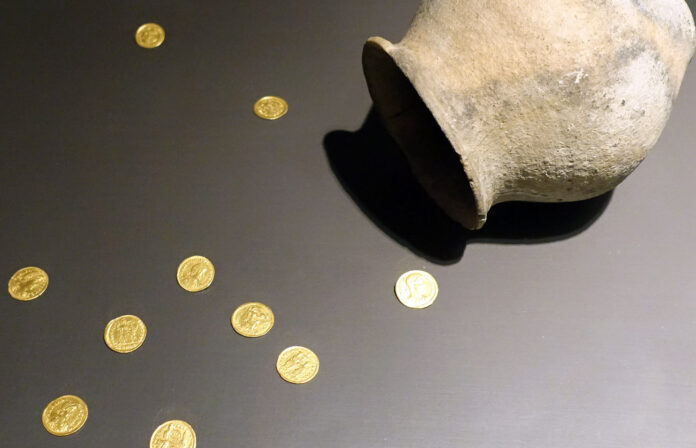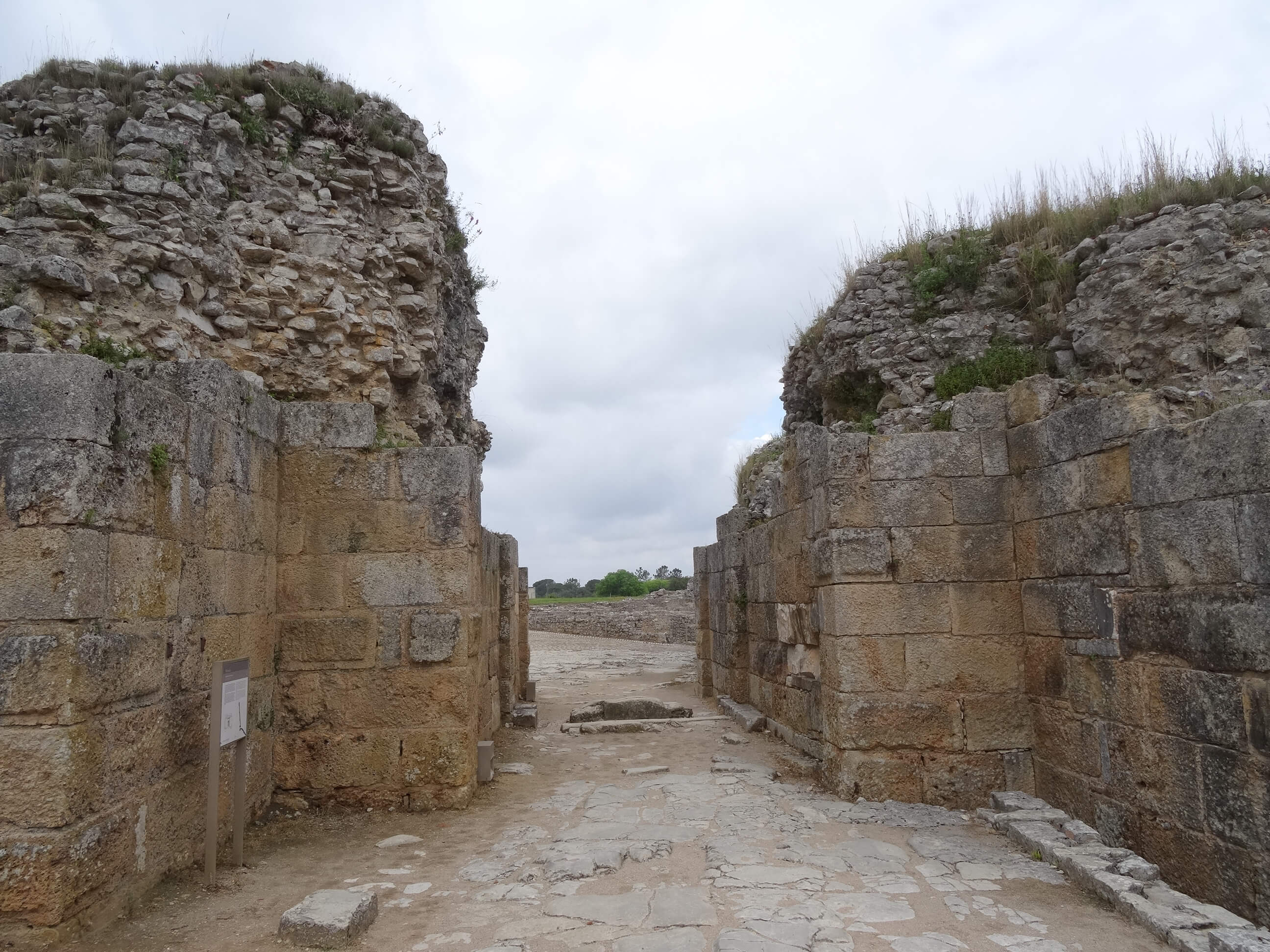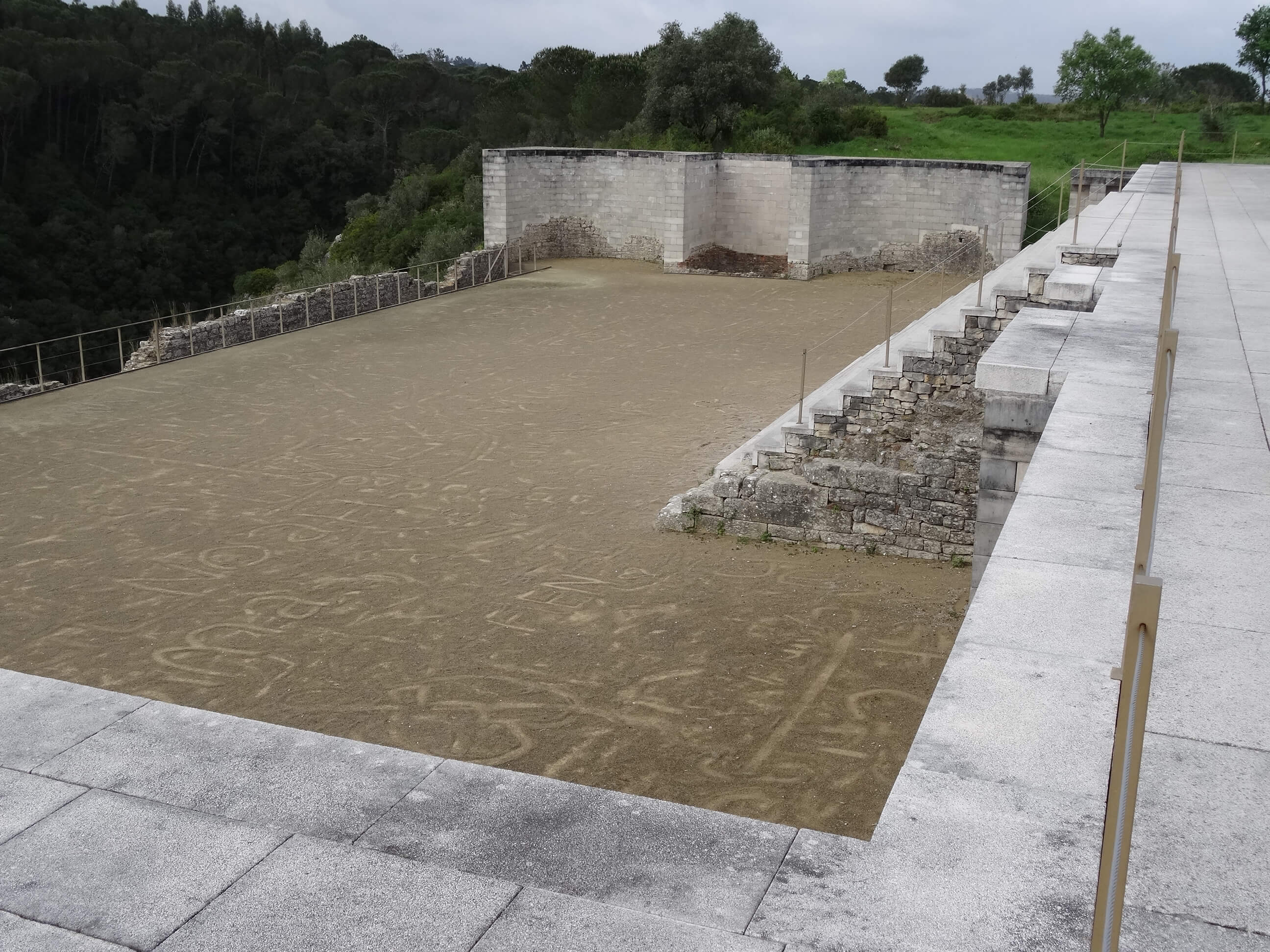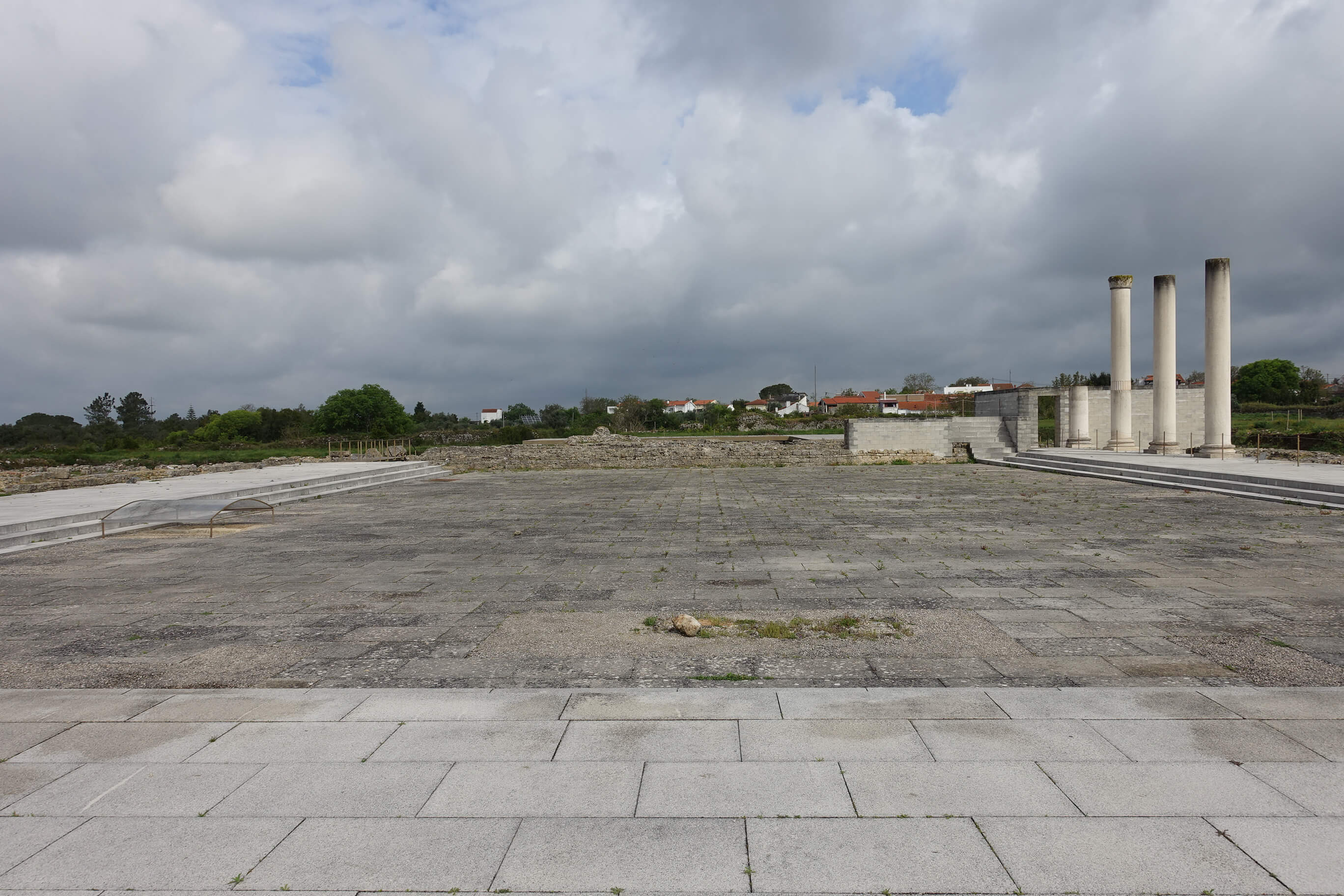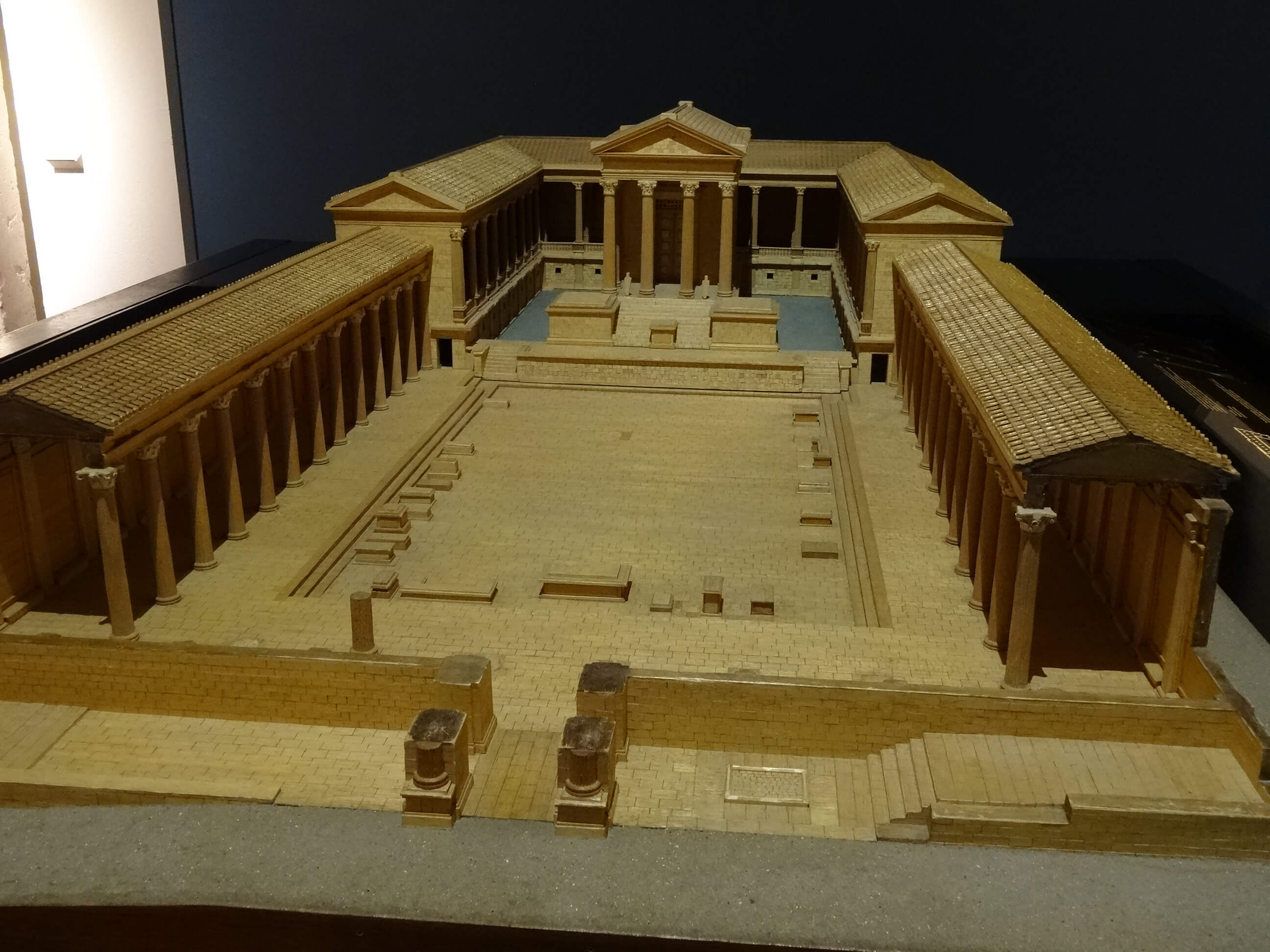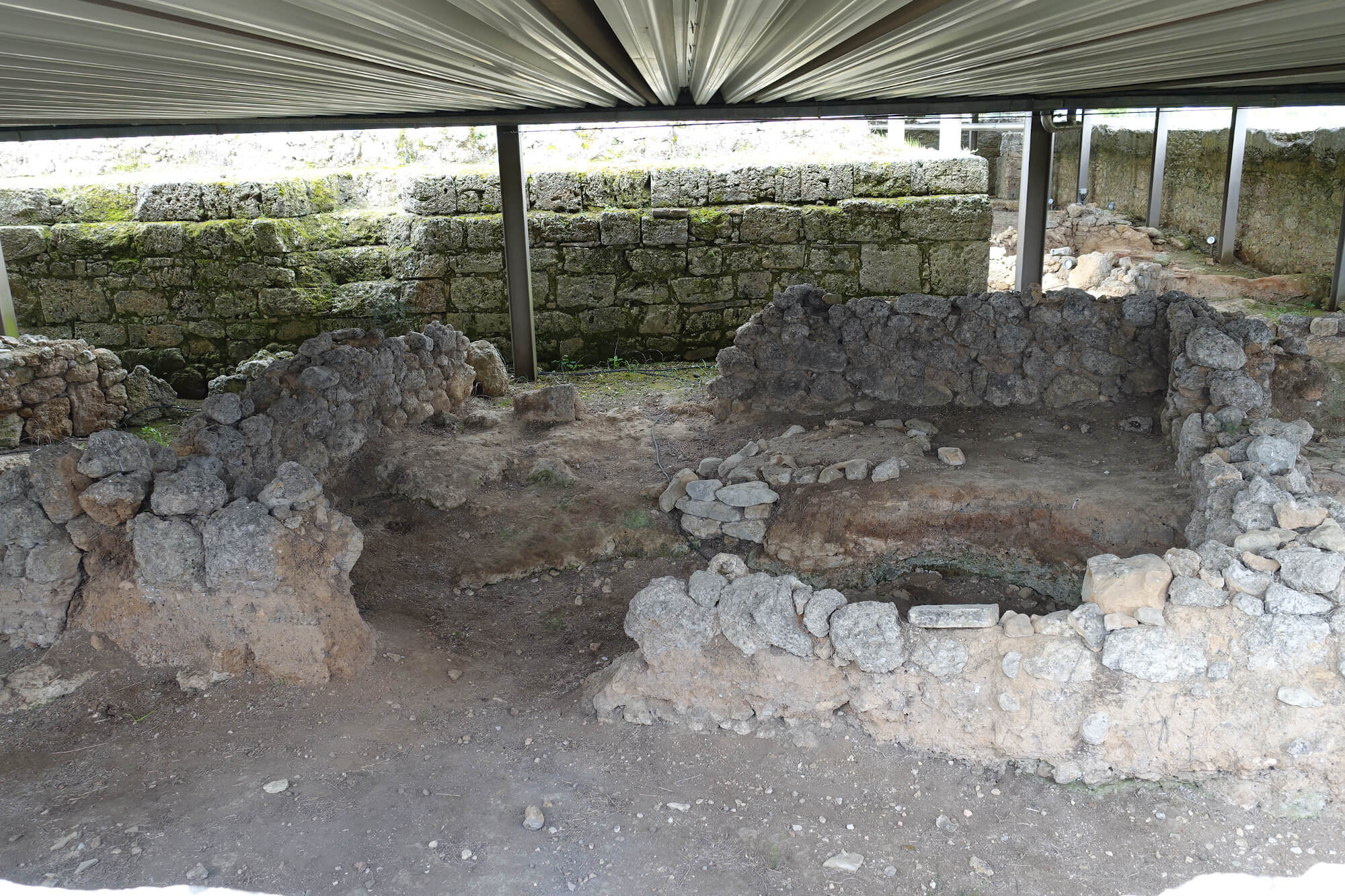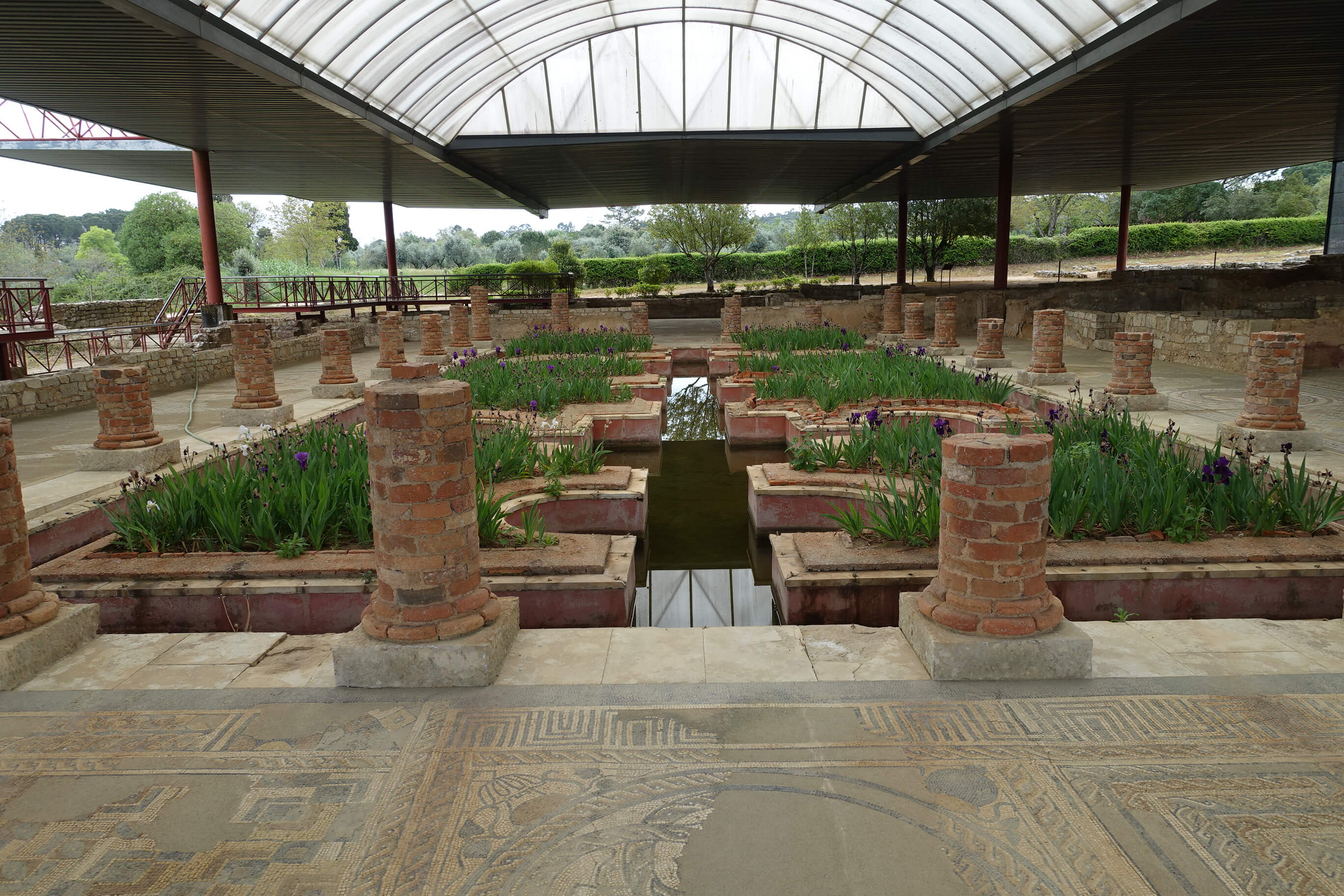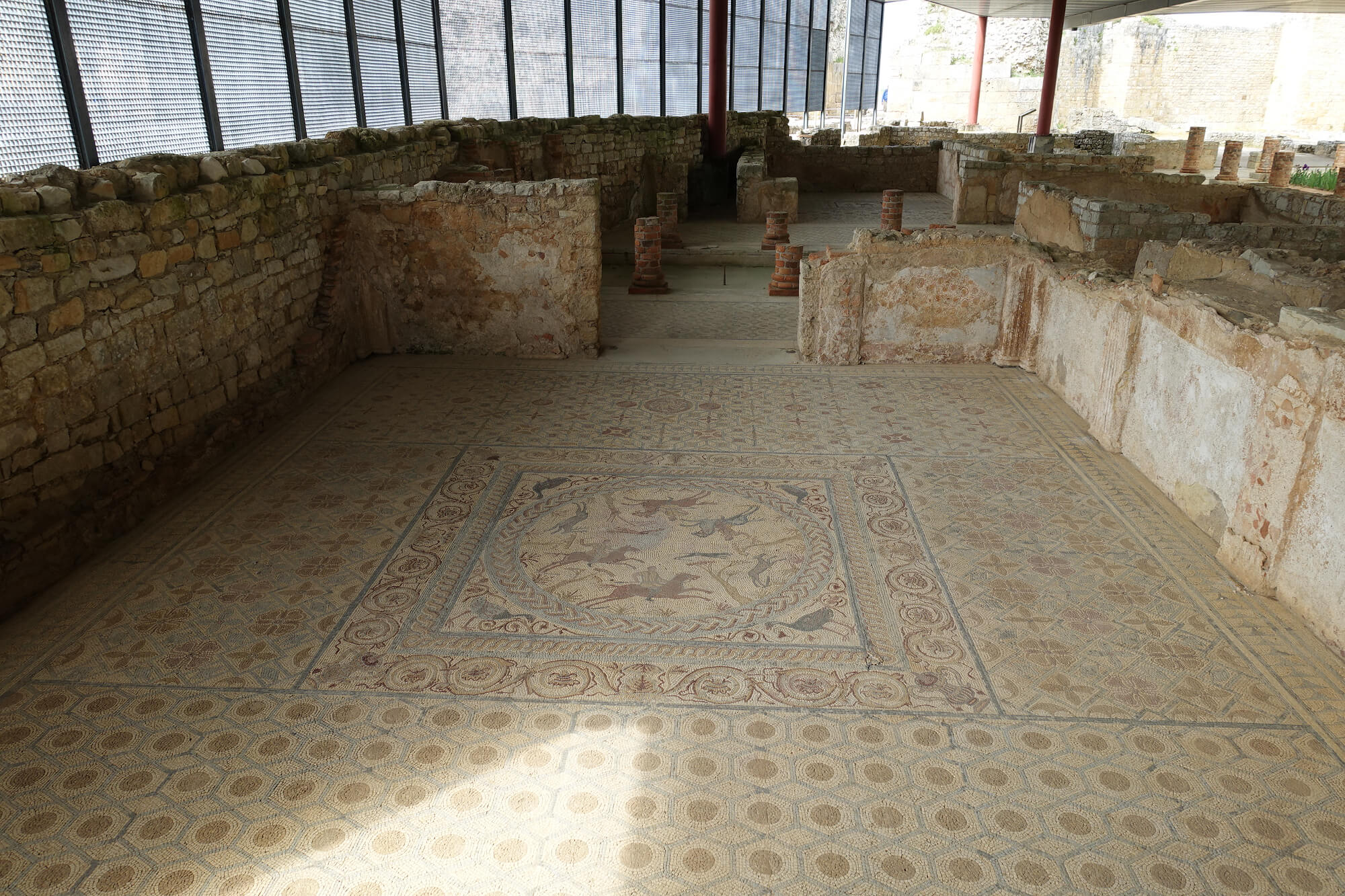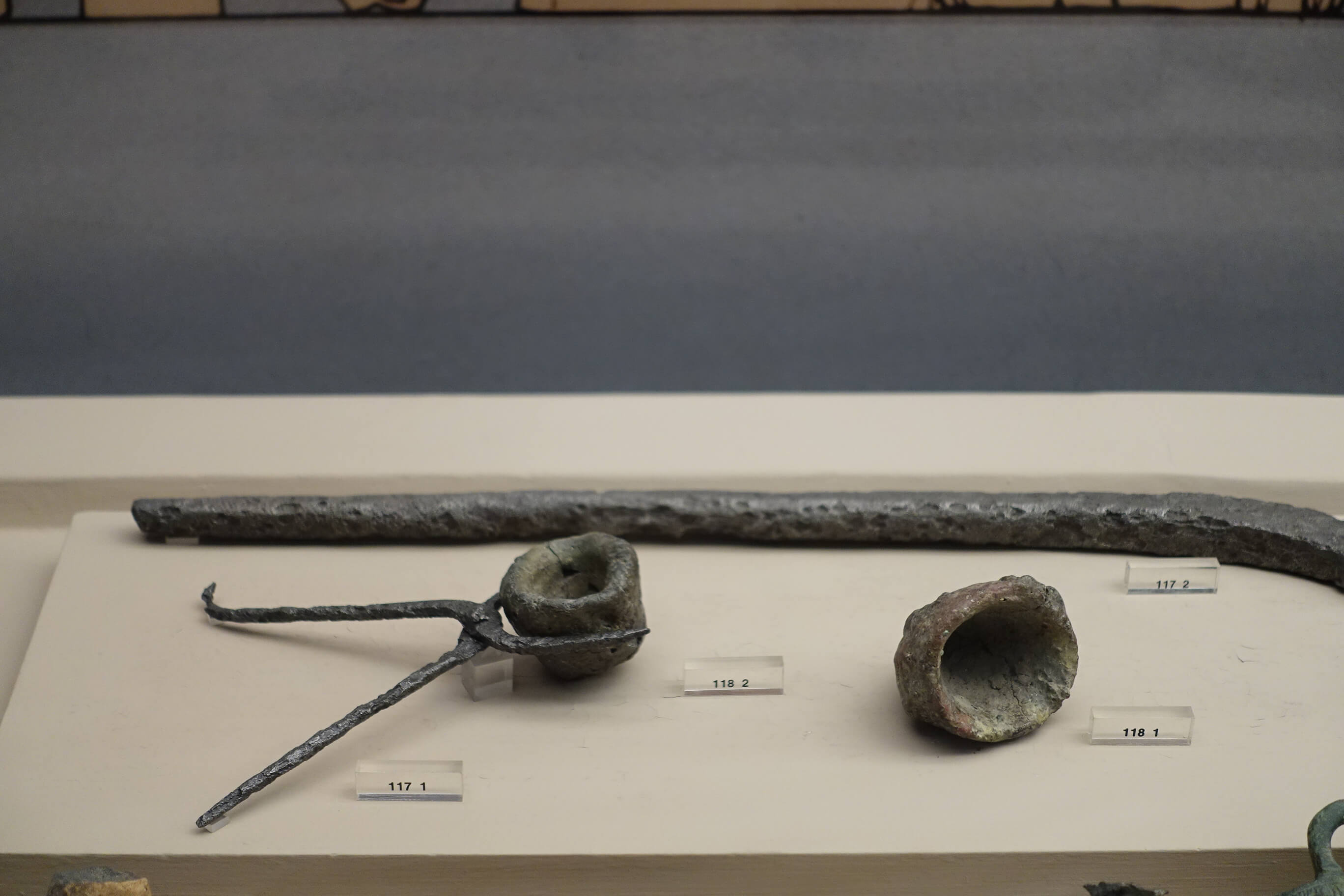Talking about the last vacation is usually a pretty good way of gauging what kind of person you have in front of you. There is a great variety of types. And normally you can tell which type you are dealing with pretty quickly once they tell you which city in a country they liked best. Take Aveiro. The first time we heard of it was when Kurt’s 96-year-old mother showed us an article about the city in the Glückspost (a specimen of the Swiss yellow press). She thought it sounded great. Gondolas and canals, sweet local specialities… Yes, yes, we did find all that …
Thursday, 16 April 2015 – Conimbriga and Aveiro
We awoke shortly past six. Mind you, not by ourselves. Strange noises, which we were not able to identify clearly, were coming from the room below us. It sounded somewhat like a primitive dance, in which someone was hitting a big drum at long intervals. And a softer noise in between. We listened intently but were unable to come to a conclusion. Going back to sleep was out of the question and breakfast was of course not yet being served either. So we got dressed and left our room feeling a little disgruntled to find out who was responsible for the noise.
The culprit was quickly discovered. Our room was located above the gym, which officially was supposed to open only at 9 am. A quick chat with the receptionist shed some light on the matter: Yes, they had opened the gym earlier today because a (very important) businessman wanted to do a quick work-out before the critical business negotiations. That the gym was not open before 9 am for a reason, unfortunately, had not occurred to the lady at the reception desk.
The early work-out had one advantage. We were among the first visitors in Conimbriga, which lies at a distance of some 16 km from modern-day Coimbra. Since we would pass by the latter on our return journey anyway, today’s agenda were the excavations only. And those were impressive by their size alone. Only 10% of the ancient settlement has been brought to the surface.
An especially impressive sight is the former palestra of the southern baths, and not just because of its size and the attempted reconstruction. A lobby used to separate visitors from the steep cliffs, which drop down a good 50 m to the valley, where there is only a low railing today.
Central site of the settlement is the forum, and the local museum possesses an excellent model of it.
Below the forum, one can still find traces of the pre-Roman settlers. Already the name – Conimbriga – indicates that the place was settled long before the Romans. “Conim” refers to a place that sits on top of a crag or cliff, and “briga” is a Celtic suffix used for a citadel. Conimbriga, hence, is the citadel that sits on top of a prominent rock formation. And indeed the place was settled by people summed up under the term “Castro culture” today already in the 9th century BC.
If you want to see the Castro culture by means of a complete excavation as well as reconstructed houses, take a look at the article on A Guara in Numismatic Northern Spain – Part 5.
It must have occurred to someone that theatre performances and concerts in the proximity of romantic ruins are as good a business opportunity in Conimbriga as elsewhere. Unfortunately there was no theatre suited to the purpose in the area. Without further ado, the pool of a small thermal bath was converted into a stage, which now understandably causes some confusion among visitors.
The grand finale of our visit was the Casa dos Repuxos, the House of Fountains. Its manicured flower beds convey a much better impression of what this luxurious villa must have looked like once upon a time.
Every room is decorated with magnificent mosaics. The stately home was built at some point during the 1st century AD but given up again already in the late 3rd or early 4th century because it was located outside of the protective city walls.
The excavation site has its own small museum, which devotes a visible effort to showing its visitors how to imagine the ruins of the excavation site in their original state.

I admit that we were already in the museum when I realised that the column remains were not modern reconstructions but actually ancient originals.
There were even coin finds. For instance this small pot, in which 10 solidi were hidden during the attack of the Suebi in the mid-5th century BC.
More interesting objects, like a blacksmith’s crucible, are on display in this show case.
From Conimbriga we drove on to Aveiro. Soon we found a car park right in the middle of a shopping centre. And a shopping centre was a good idea since a slight drizzle had set in by then and we were about to buy an umbrella, believe it or not.

Sadly, not a single umbrella was to be found in the whole shopping centre! There were trendy sun glasses, short skirts, high heels, elegant leather briefcases. A decent umbrella? Nope. There were, by the way, no umbrellas anywhere in the city. Instead, there were lots of small souvenir gondolas made of plastic because Aveiro prides itself with being the Venice of Portugal.
The Venice of Portugal is a smart marketing trick of the tourist office to promote the old town, which is admittedly quite pretty, and its three small canals more effectively.
In comparison with Venice, however, Aveiro cannot but lose. It is beautiful in its own right. Aveiro, after all, used to be very rich. The city receives its name from the salt production that took place here since Antiquity: Alvarium et Salinas, salt basin and meeting place of the birds.

These days, when the weather is good, Aveiro is predominantly a meeting place for tourists, who enthusiastically ride boats up and down the canals. The boats are painted in bright colours and their shape is reminiscent of the old fishing boats common in this area. But do not believe in this idyll too naively. In the 16th century the city was booming and fishing was industrialised. Fishermen from Aveiro rode their (hopefully slightly bigger) boats all the way up to Newfoundland when fish became scarce before Portugal’s coast.

But then the harbour became blocked up with silt due to a terrible storm in 1575. Aveiro faded into obscurity. Of the 14,000 inhabitants who populated the city in the 16th century – yes, that is an astonishing number for the time! – only 3,500 remained. Aveiro turned into marshland with minor salt production activity until it was connected to the railway network in 1864. The Linha do Norte connected Lisbon and Porto by passing Aveiro. This enabled the cheap and fast transport of goods. And that caused another economic boom.
You can still see it in the cityscape today. It has plenty of magnificent art nouveau facades.
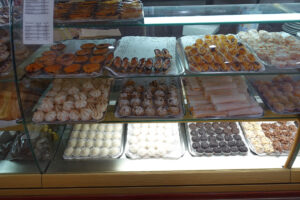
Most visitors, however, care more for the sweet delights offered in the city’s pastry shops. The speciality is called Ovos Moles de Aveiro. The “soft eggs” let you travel back to the days of your childhood when mommy let you lick the bowl after baking. A thin crust of wafer dough holds a rich filling made of egg yolk and sugar, providing tons of calories and not much of a culinary highlight apart from the sensation “sweet”.
We left Aveiro without umbrella and without having been on one of the small boats. The drizzle changed into a heavy downpour and we made our way to the next pousada, a modern building right next to a quiet laguna.
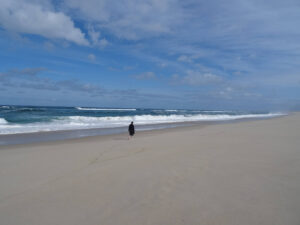
It was by no means our first pousada. And in all pousadas we had experienced attentive friendliness. Nevertheless, this was even better! It began with the special guided tour around the whole building upon our arrival, continued with the friendly and competent service at dinner (no thanks, we would rather not try the sweet and sour pig’s ears!) and it ended with the attentive service at breakfast. To this day, Mariana sends me greetings with a wonderful vista of the surrounding nature from the pousada once in a while.
Even though the pousada may not be the architectural highlight of our journey, its surroundings make more than up for it. It is situated right in the middle of a nature reserve. From the balcony, which overhangs the laguna, you can watch the fishermen go about their work.
On the other side of the laguna, facing the Atlantic, lie the beaches where tourists repose on sunny days.
We spent a whole day here surrounded by nature so we could finally keep up with the diary, answer emails from home and enjoy a long, long, solitary walk on the beach until it started raining again. Right, we still did not have an umbrella.
In our next episode we will take you to Guimeraes, the first capital of the future Portugal. Salazar would later use it to create a national identity. Nevertheless, the city remains a jewel of extraordinary beauty.
Here you will find all episodes of our series “Global Power Portugal”.



